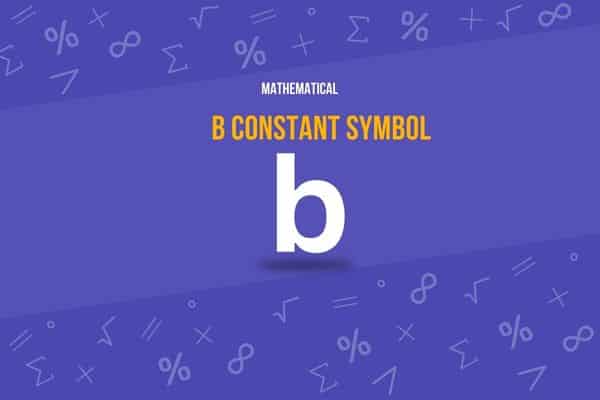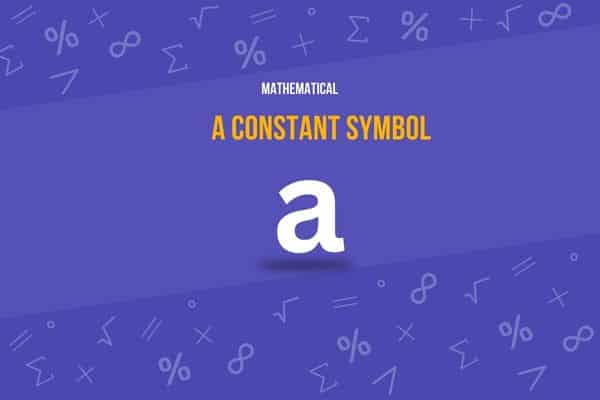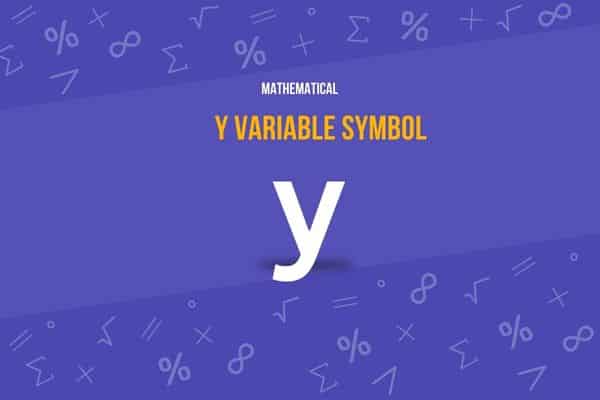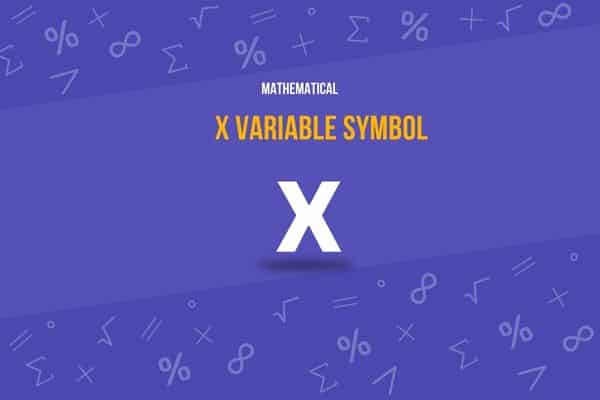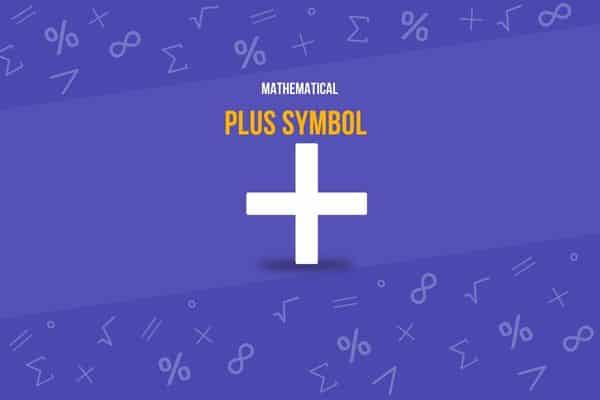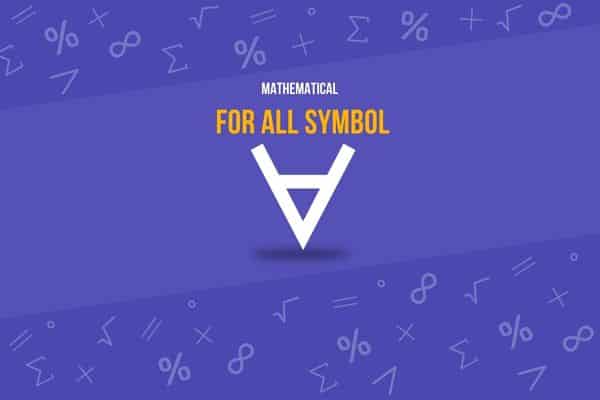What is the Less Than Symbol?
Are you puzzled by the various applications of the less-than symbol (<) in mathematics and coding? Whether you’re a student grappling with equations or a developer handling conditional statements, understanding this symbol’s nuances is essential.
This article will overview the less-than symbol’s history, significance, and usage across different contexts. By the end, you’ll appreciate its mathematical importance and utility in programming and beyond.
Continue reading to gain a comprehensive insight into how the less-than symbol shapes logical and mathematical reasoning.
Let’s get started!
Fast Facts
<
Less -Than Symbol
Less -Than Symbol (<) Overview
Here's a comprehensive table detailing the characteristics of the Less Than Symbol (<):
| Attribute | Details |
|---|---|
| Symbol Name | Less Than Symbol |
| Unicode | U+003C |
| Image | < |
| Brief Description | A mathematical symbol used to indicate that one value is less than another. Also used in programming for logical comparisons and HTML to denote tags. |
| Unicode Version and Date of this Version | Unicode 1.1.0, released in June 1993 |
| Unicode Block Name | Basic Latin |
| Plane | BMP (Basic Multilingual Plane) |
| Script | Common |
| Category | Math Symbol (Sm) |
| Bidirectional Class | ON (Other Neutrals) |
| Combining Class | 0 (Not Reordered) |
| Character is Mirrored | No |
| HTML Entity | < or < |
| CSS | \003C |
| UTF-8 Encoding | 3C |
| UTF-16 Encoding | 003C |
| UTF-32 Encoding | 0000003C |
Here's What You Will Find
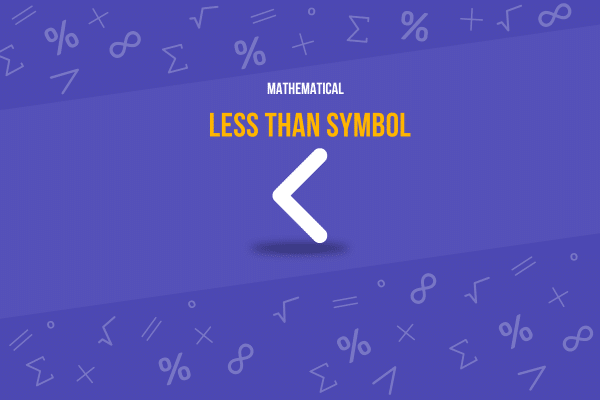
Less Than Symbol
The less-than symbol, denoted as "<, "is pervasive in numerous fields, including mathematics, computer science, and linguistics.
In mathematics, it's used to compare numbers, denoting that one number is smaller than another. It's often introduced to students in early grade school as they begin to learn about numerical relationships. Despite its simple appearance, the less-than symbol has many applications, demonstrating its indispensable role in daily life.
Other Names
Beyond its standard moniker as the less than symbol, the "<" character is known by various other names across different fields and contexts. In mathematics, it's sometimes referred to as the inequality symbol, as it's used to represent an inequality relationship between two values. Computer programmers may identify it as an angle bracket, particularly when it's used in markup languages such as HTML or XML to denote tags.
Less-Than Symbol Meaning
The less than symbol (<) is a fundamental mathematical symbol used to compare two values, indicating that the value on the left side is smaller than the value on the right side. For example, in the expression "3 < 5," it asserts that 3 is less than 5. This symbol is pivotal in mathematics for expressing inequalities, which are essential for solving a range of mathematical problems from basic arithmetic to advanced calculus.
The less-than symbol also plays a crucial role in various programming languages. It compares numbers, performs conditional testing, and controls the logic flow within algorithms. Its simplicity in design belies its importance in facilitating logical reasoning and mathematical computations across diverse applications.
The less than symbol, depicted as "<, "primarily conveys the concept of 'smaller than' or 'fewer than' in a comparative sense. Its primary domain is mathematics, which expresses a relationship between two numbers or quantities, showing that one is less than the other. When employed in markup languages, it serves as an angle bracket to denote the start or end of tags. In digital communication, it has evolved to adopt a more symbolic role; paired with the number three, "<3", it becomes a representation of a heart, a visual shorthand for love or affection.
Thus, the less-than symbol embodies a variety of meanings depending on the context, ranging from numeric comparison to expressing emotional sentiments.
Less-Than Symbol Unicode
Unicode is a universal character encoding standard that's used in the computing industry. It enables the consistent representation and handling of text expressed in most of the world's writing systems. From English and Chinese characters and mathematical symbols to emojis - Unicode includes a code point for each one, helping computers understand and display them correctly no matter where or how they're being used.
The less than symbol has its unique Unicode identifier: U+003C. This code point is standardized across different platforms and programming languages, ensuring that whenever you type "<" or its corresponding Unicode, the resulting character displayed will consistently be the less than symbol.
Less-Than Symbol Uses
The less-than symbol (<) is an essential tool in mathematics, programming, and beyond, serving a broad spectrum of purposes that highlight its significance in various fields. Its primary role is in creating relationships between values, making it indispensable for quantitative reasoning and logical operations. Here are some of the primary uses of the less than symbol:
- Mathematical Comparisons: At its core, the less than symbol is used to compare numerical values, indicating that one number is smaller than another.
- Conditional Statements in Programming: In computer programming, this symbol is pivotal in conditional statements that control the execution flow. It helps determine whether a specific condition has been met.
- Sorting Algorithms: In computer science, the less than symbol is used within sorting algorithms to decide the order in which elements should be arranged.
- Set Theory: In mathematics, especially set theory, set theory expresses that one set is a subset of another. It is less strictly used than its more formal subset notation.
- HTML Markup: The less than symbol is also used in HTML to create tags, marking the beginning of an element.
The less-than symbol is versatile and can be found in various disciplines and applications. In mathematics, it signifies that one number is smaller than another, serving as a fundamental building block for concepts such as inequalities and set theory.
Computer programming is crucial in creating conditional statements, sorting algorithms, and performing other logical operations. Perhaps most notably, the symbol acts as an angle bracket in markup languages like HTML and XML, where it's used to encapsulate tags.
In digital communication, the less than symbol plays a more symbolic role. Coupled with the number three, "<3" represents a heart expressing love or affection.
Thus, the less-than symbol plays a significant role in our lives, from math to coding to texting.
Less Than Symbol Examples
Let's look at some examples from mathematics and computer programming.
To fully appreciate the utility of the less-than symbol, let’s consider it in various practical applications:
- Mathematical Usage: In math, the less than symbol is used to show inequality between two numbers. For example, stating that 7 < 10 indicates that seven is less than ten.
- Programming Conditions: In programming, this symbol plays a critical role in making logical decisions. For instance, in a conditional statement like
if (x < y), the code block executes only if x is less than y. - Sorting Function: In a sorting function, such as in a Python program, you might use the less than symbol to help determine the order of elements
- HTML Tags: In HTML, every tag begins with a less than symbol, like
<html>,<body>,<p>, etc., signifying the start of an HTML element.
If we have two numbers, say 3 and 7, we can use the less than symbol to show the relationship between these two numbers: 3 < 7. This simply means that 3 is less than 7. In a programming language like Python, the less than symbol can be used in a conditional statement, such as in an "if" statement. For instance, consider the following code:
These examples showcase the versatility and fundamental nature of the less than symbol in facilitating mathematical reasoning, programming logic, and even in structuring web documents.
Why is the Less Than Symbol Important?
The less-than symbol's importance lies in its utility and ubiquity across several disciplines. Mathematics forms the backbone of understanding numerical relationships and inequalities, a concept that extends into more advanced fields such as calculus and linear algebra. In computer science, it's a vital operator in conditional logic, and as an angle bracket in various markup languages, it's fundamental for structuring documents on the web.
Even beyond these technical fields, its symbolic usage in digital communication, representing a heart, shows its cultural significance. Without the less-than symbol, expressing certain mathematical relationships would be harder, programming logic would be more complex, digital documents would be challenging to structure, and expressing affection in text messages would be less convenient. The symbol is not just a character; it's an essential tool for expressing a wide range of human and computational ideas.
Less Than Symbol History
The less-than symbol, along with its counterpart, the "greater-than" symbol, traces its origins back to the 16th century. The symbols were first used by the English mathematician Thomas Harriot in his manuscripts in the late 16th century, but it was Robert Recorde, another English mathematician, who introduced these symbols to a broader audience. Recorde is often credited with their first published use in his work "The Whetstone of Witte" in 1557.
Less Than Symbol Origin
Robert Recorde's rationale for choosing these symbols was practicality. He desired a simple way to express inequalities without using lengthy phrases, hence the birth of these succinct yet meaningful symbols. Their use has since been standardized in mathematics and later adopted by other fields, including computer programming and digital communication, making them a staple in today's lexicon of symbols.
Evolution of the Less Than Symbol
While the less-than symbol has not changed much in appearance over time, it has drastically changed function. Starting out as a purely mathematical symbol, it has found a home in computer science applications and digital communications. As a conditional operator, it is a crucial part of many computer languages, in addition to its indispensable role in languages like HTML and XML to signify attributes and elements.
Additionally, the less-than symbol is used in various emoticons, which are popular in today's digital communications. Despite these shifts in usage and meaning across different fields and contexts, the less-than symbol has maintained its core function of representing a type of relation or sequence. Its journey over the centuries is a testament to its adaptability and enduring relevance.
Less Than Symbol In Everyday Life
In its humble simplicity, the less-than symbol carries profound implications. Its basic premise in comparing quantities is a cornerstone of logical thinking, a principle that can be transferred to everyday decision-making.
For instance, when prioritizing tasks, one might consider the symbol a tool to evaluate which tasks are less important or urgent, thereby forming a rational order of action. The less-than symbol is more than just a character on a keyboard or a mark on paper; it's a symbol of comparison, expression, and logical order, with lessons to offer in our professional and personal lives.
Last Thoughts
The less-than symbol is a remarkable character that bridges the worlds of mathematics, programming, and digital communication and even impacts popular culture. Its versatile uses and historical evolution reveal its importance in our daily lives, explicitly and subtly. Its journey from a simple mathematical symbol to a multi-dimensional tool demonstrates the incredible depth behind what may seem like the simplest of characters.
We hope this exploration of the less-than symbol has piqued your curiosity about the rich world of symbols and signs. Perhaps you'd like to explore, discover the stories behind other symbols, or even find merchandise featuring your favorite symbols. After all, each symbol has a tale, a role, and a deeper meaning awaiting your discovery!
Before You Go
Don't stop your exploration here - there's a whole universe of other symbols, each with its intriguing history, usage, and influence, just waiting for you to discover!
If you found this exploration of the less-than symbol (<) enlightening, why not share it with others? Whether they're students grappling with mathematics, developers fine-tuning their coding skills, or anyone curious about the intricacies of digital writing like HTML, this piece sheds light on a symbol that plays a pivotal role across multiple disciplines.
Sharing this knowledge can spark insightful discussions and deepen understanding among your peers and colleagues.
So, go ahead and spread the word about the versatile and indispensable less-than symbol!

